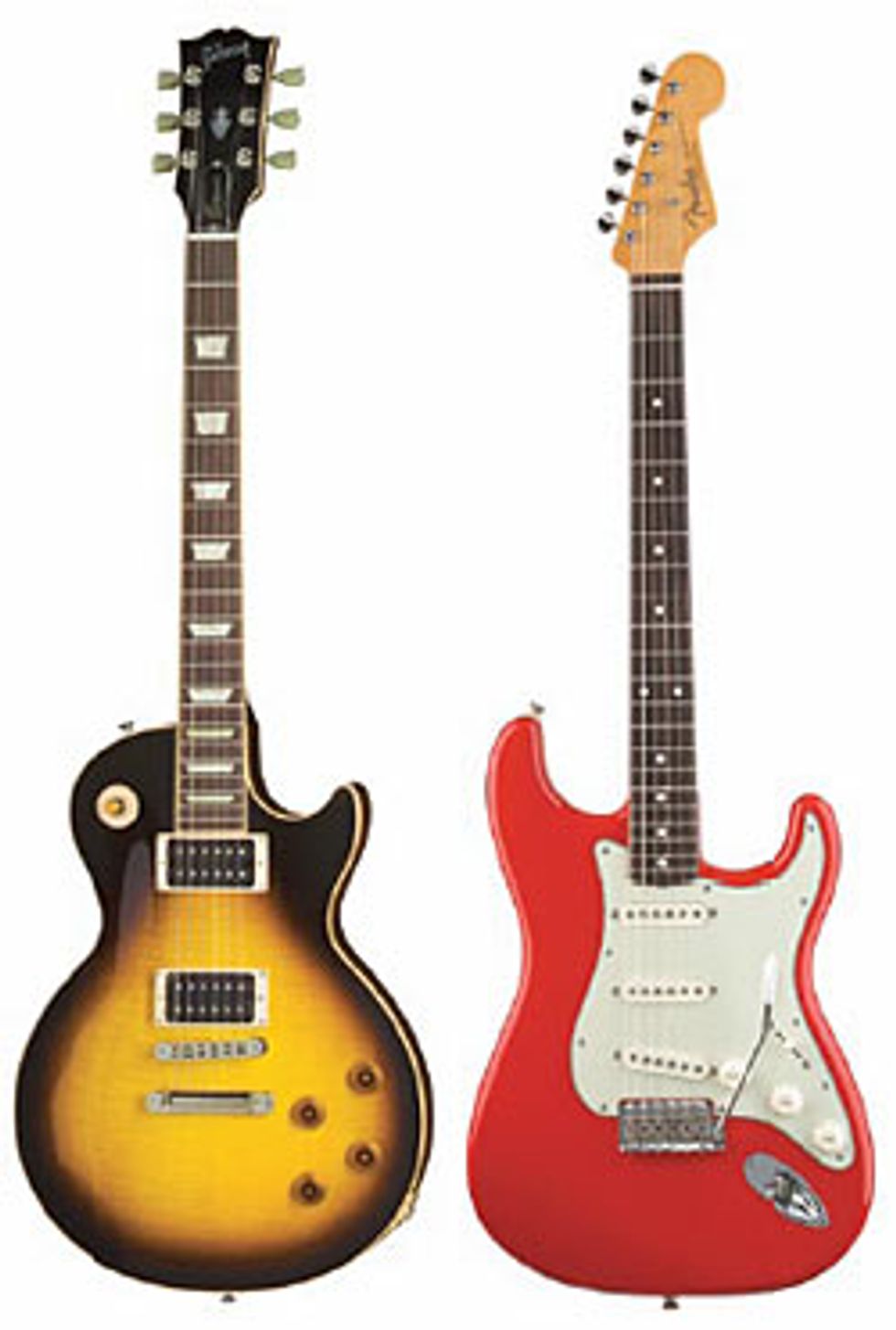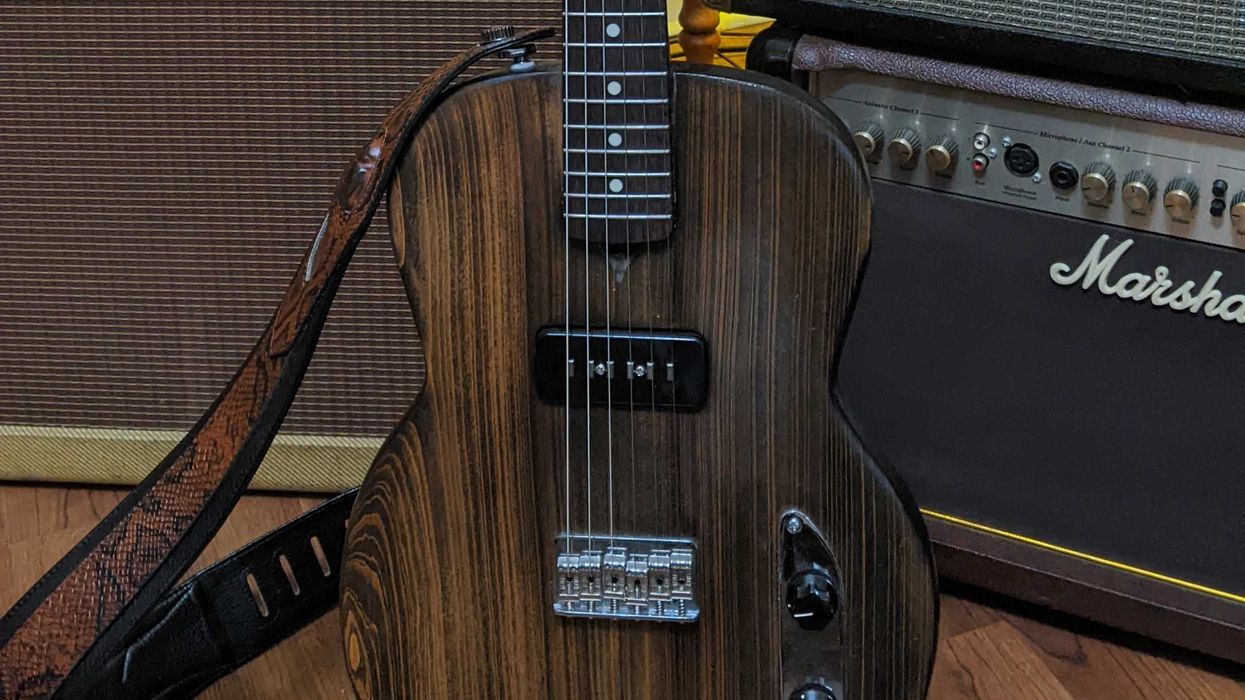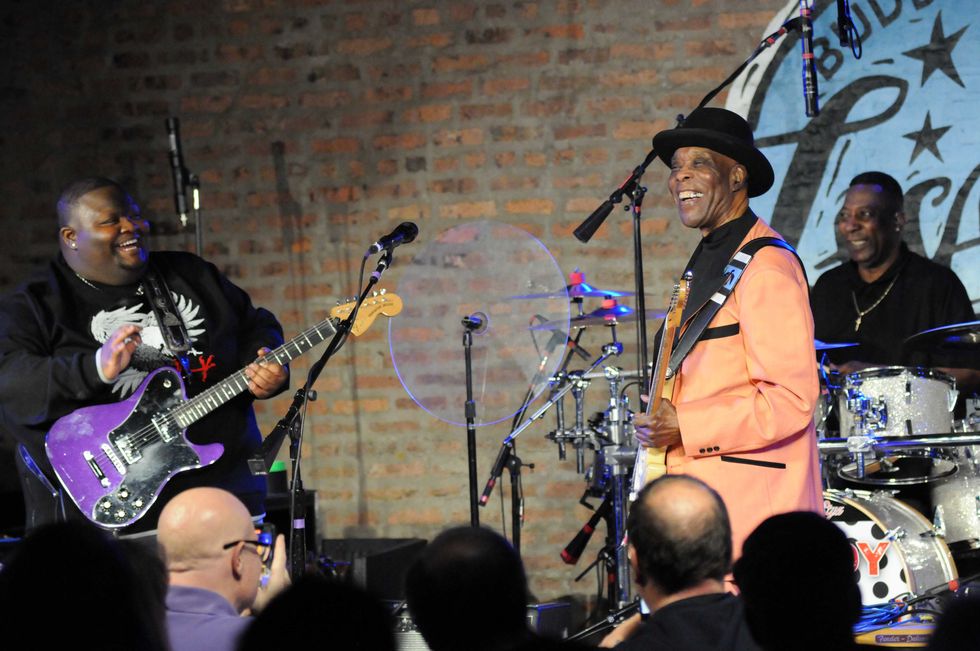 I recently presented a seminar for high school students interested in becoming guitar technicians and luthiers. As you can imagine, these hungry, young minds had all kinds of preconceived notions about guitar building and repair. A few even brought along instruments they had built, with a couple of those actually looking like guitars. In spite of their conspicuous lack of expertise and a few hints of trepidation, there was an overriding sense of passion for the guitar present in each of them. To give them hope and validate their passion, I passed on some of the following lesser-known stories about two guitar icons.
I recently presented a seminar for high school students interested in becoming guitar technicians and luthiers. As you can imagine, these hungry, young minds had all kinds of preconceived notions about guitar building and repair. A few even brought along instruments they had built, with a couple of those actually looking like guitars. In spite of their conspicuous lack of expertise and a few hints of trepidation, there was an overriding sense of passion for the guitar present in each of them. To give them hope and validate their passion, I passed on some of the following lesser-known stories about two guitar icons. In 1943, a saxophonist named Leo made a guitar out of oak and gave it away to country music star Roy Acuff. A few years before that, Lester Polfus attached a neck to a 4x4 piece of lumber and took it to a gig at a nightclub. He later cut two sides off of an acoustic guitar and attached them to the 4x4, “so it looked like a guitar.” Lester called it “the log.” In 1948, that same man from Waukesha, Wisconsin shattered his arm in a nearly-fatal car accident, but was somehow able to get the doctor to set his arm permanently in a position conducive to guitar playing. In 1950, the saxophonist named Leo demonstrated that if a person could stand on a guitar neck placed between two chairs, it would be strong and durable enough to withstand the tension placed on it by strings.
As crazy as it may sound, these two men ended up producing not only the most popular electric guitars of all time, but in the process, became musical icons who will live throughout history. The Fender Telecaster and Stratocaster – designed by that visionary saxophonist, Leo Fender – and the Gibson Les Paul – the brainchild of Lester Polfus – are beyond what would typically be considered “industry standards.” Every beginning guitarist pines for at least one of these axes and every seasoned pro has owned several examples in his or her lifetime. As evidence of just how symbolic they’ve become, an image of a Strat is carved into Jimi Hendrix’s tombstone and Eric Clapton’s “Blackie” Stratocaster sold for nearly a million dollars at a Christie’s auction in July of 2004.
I wonder if Leo Fender or Les Paul actually thought that the likes of Jeff Beck, Stevie Ray Vaughan, Jimi Hendrix, Eric Clapton, Jimmy Page, Pete Townsend, Robben Ford, Zakk Wylde or Joe Perry would take their creations to such great places in music and world history. So much has been written about the guitars these men produced and endorsed, yet these two inventors were just men following their passion and interest whose ideas influenced generations of guitar makers and players.
They were also good friends. A commonly told story has it that one afternoon in the early 1950s, Leo Fender, an owner of a local radio repair shop, showed up at Les Paul’s house in Los Angeles to talk about his ideas for a solidbody guitar. Leo told Les that they should form a company together, but Les told him he’d been loyal to Gibson all his life, even though Les had tried to convince Gibson to make a solidbody for ten years. Gibson even called him “the guy with the broomstick with the pickups on it.” It was after Fender’s visit that Les Paul contacted Gibson again and in a 30-hour meeting convinced them that “the log” was the future. Just imagine the guitars that would have been made through Leo and Les’ collaboration!
Shortly after their meeting, Leo Fender released the first commercial solidbody and five years later followed with the legendary Stratocaster. The Precision Bass was also released during that time. Gibson answered in 1952 with its first Les Paul model, and history was made. Interestingly enough, a Gibson solidbody with no serial number was most likely made in 1952, as Gibson didn’t use serial numbers that year. Fender had a similar faux pas while the Telecaster name was being considered, as Fender produced guitars with no name on the headstock. The resulting “Nocasters” are now sought-after collector’s items.
For more than half a century, these two men have not only influenced the style and sound of modern music; they have created symbols of human evolution. Yes, they were a bit crazy, as all inventors are, but they were also deep thinkers with fun-loving attitudes and expert craftsmanship. So as you young or inexperienced guitar technicians get started, think about these two masters and their awkward beginnings and let your passion fuel your perseverance. Ultimately, I am glad that the Les Paul model is not a Lester Polfus and that Strats are not made of oak, although the idea of bringing home the latest oak Lester Polfus to show Ma and Pa does have some sort of strange appeal.
Rick Wheeler
Rick Wheeler currently works as Larry Carlton’s guitar tech and front of house engineer. He is also an accomplished jazz guitarist, vocalist, and educator. You can contact Rick at rickwheeler@hughes.net




















![Rig Rundown: AFI [2025]](https://www.premierguitar.com/media-library/youtube.jpg?id=62064741&width=1245&height=700&quality=70&coordinates=0%2C0%2C0%2C0)












 Shop Scott's Rig
Shop Scott's Rig